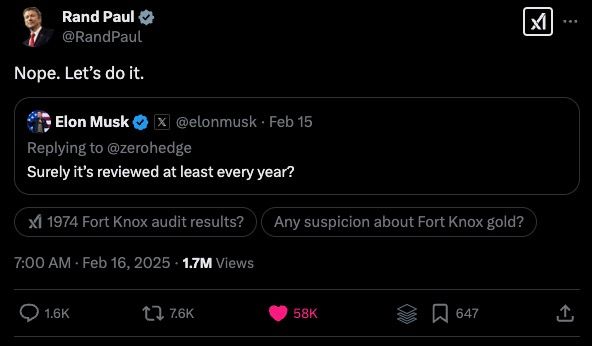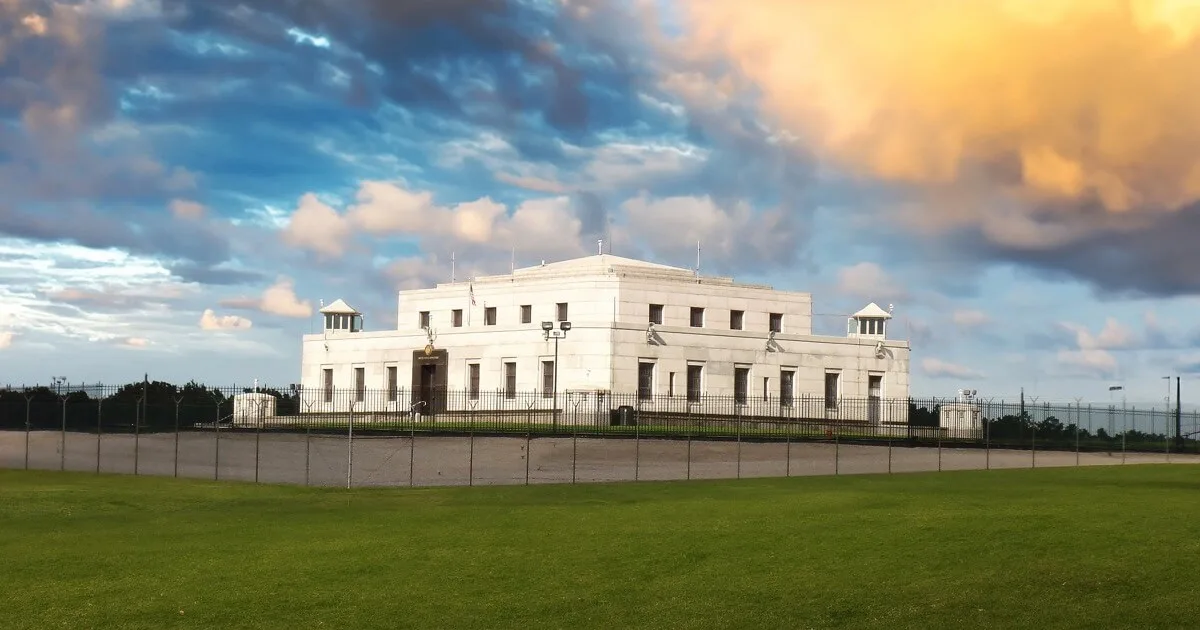
A series of social media exchanges between Elon Musk and others has ignited public discussion about the gold reserves at Fort Knox, which reportedly haven’t been audited since 1974. The conversation began when Zero Hedge’s X account suggested that Musk “take a look inside Fort Knox” to verify the reported 4,580 tons of US gold reserves, prompting Musk to question whether the reserves weren’t reviewed annually.

U.S. Senator Rand Paul joined the conversation, expressing support for a potential audit with a succinct “Nope. Let’s do it.” in response to Musk’s query about annual reviews.
Industry experts have begun weighing in on the feasibility and implications of such an audit. According to Scottsdale Mint CEO Josh Phair, significant gold movements have already been observed.
“They have been flying gold into the United States out of Europe and mainly London… on almost every flight starting before Christmas,” Phair noted in recent commentary, estimating approximately four tons per passenger flight when cargo space permits.
Phair suggests several possible scenarios behind these gold movements:
- Potential preparation for an upcoming audit
- Repatriation of U.S. gold previously stored at the Bank of England
- Strategic positioning in response to gold accumulation by BRICS nations, particularly China
- Part of a larger central bank deleveraging process
The last comprehensive audit of Fort Knox gold reserves reportedly occurred in the early 1950s, with only a partial audit conducted in 1974. Any new audit would need to account for historical variations in gold bar specifications, as some older reserves may have different weights and purities compared to modern standards.
The discussion comes at a time of increased focus on global gold reserves and central bank holdings. Reports indicate record amounts of gold arriving at COMEX, and some international mints, such as Korea’s, have reportedly paused their gold and silver sales.
While social media speculation continues to mount, no official announcement regarding a Fort Knox audit has been made by U.S. authorities. The Treasury Department, which oversees Fort Knox through the U.S. Mint, has not yet commented on the discussion.

Fort Knox, located in Kentucky, has served as the primary storage facility for U.S. gold reserves since the 1930s. Its security and contents have long been a subject of public interest and speculation.
Note: This article is based on social media discussions and industry commentary. Official verification of the described gold movements and potential audit plans has not been provided by government authorities.





